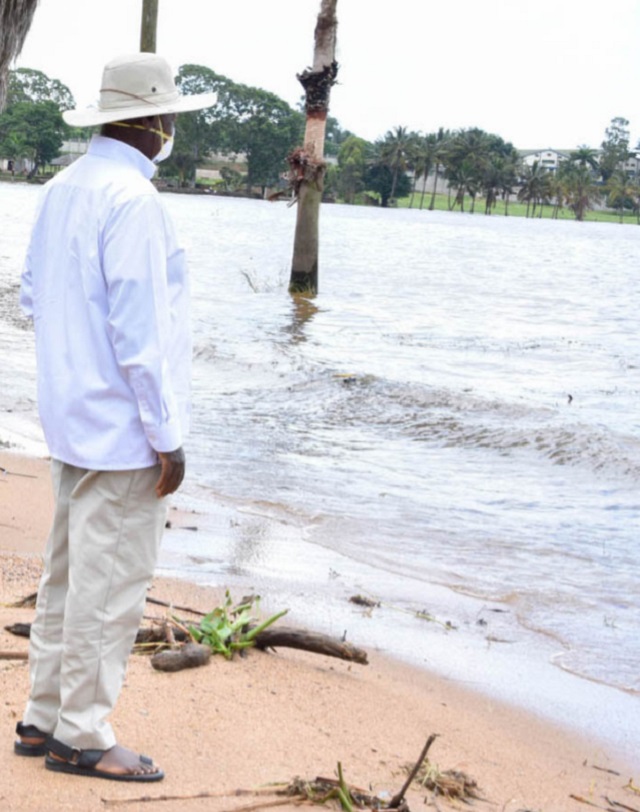
On May 20, it was the turn of the Minister of State for Lands, Housing and Urban Development, Isaac Musumba to attempt to push the Anywar line. During debate in parliament, he ruled out any support or compensation for the affected people because, he said, they had settled on the lake or its shores illegally.
“Initially the government left them there to earn a living but it cannot continue looking on as they face danger of drowning and loss of property, Musumba said, “They must leave”.
But as a barrage of criticism from MPs erupted, Musumba withdrew.
“Madam Speaker, those are difficult questions that I cannot answer now,” he said and sat down.
Truly historic events last witnessed about 60 years are happening as the water levels rise on Lake Victoria, the world’s second biggest lake by surface area. The government is yet to communicate a clear strategic response. But for people losing life and livelihoods in floods on Lake Victoria, it is an evolving nightmare.
In an event that could have profound implications for planners, the lake water level has risen by over one meter to match and surpass the previous highest level set on June 12, 1964 at 1,133.27 metres above mean sea level (mamsl) . The mean sea level is a measure of the vertical height, elevation or altitude of the lake in reference to a historic mean sea level based on a specific reference point.
Lake Victoria hit 1,134.38 metres above mean sea level (mamsl) on May 07. That is a difference of about 1.32 meters and is significant because Lake Victoria is a very shallow lake, especially on the Ugandan side where it averages a depth of just 40 meters.
07/05/2020, Lake Victoria levels recorded 13.42M surpassing the highest recorded lake level of 13.41M on 12/05/1964. The water spilling is ongoing at 2,400 CM/Sec for both Nalubaale and Kiira HPS. Directorate of Water guides on the amount of Water to be spilled @KagutaMuseveni pic.twitter.com/e9jmgcg7Nz
— Eskom Uganda Limited (@Eskomug) May 8, 2020
Lake Victoria is shared by three countries; Tanzania (49%), Uganda (45%), and Kenya (6%). And they are all experiencing high rainfall, rising lake water levels, and flooding. On the Tanzania side the water level had risen by 1.11 meters by early May. Even the El Nino rains of 1997/98 did not raise the water levels to this point. Back then, the lake levels peaked in April of 1998 at 1135.77
Experts have pointed out that the high and low Lake Victoria water levels recur in an approximately cyclic manner.
Lake Victoria gets most of its water from rainfall, approximately 75%, and the rest from at least 23 in flowing rivers. The biggest such rivers is Kagera from Burundi-Rwanda and Nyamwamba in the Rwenzori area. Most rivers are on the Kenya side Sio, Nzoia, Yala, Nyando, Sondu Miriu, Mogusi, and Migori.
But Lake Victioria loses almost an equal amount of water each year, mainly through evaporation. But a sizable volume, about 30%, flows out of the lake through its only outlet – the River Nile at Jinja. The slightest change in this pattern results in either the lake flooding its shores or shrinking.
 The Independent Uganda: You get the Truth we Pay the Price
The Independent Uganda: You get the Truth we Pay the Price



